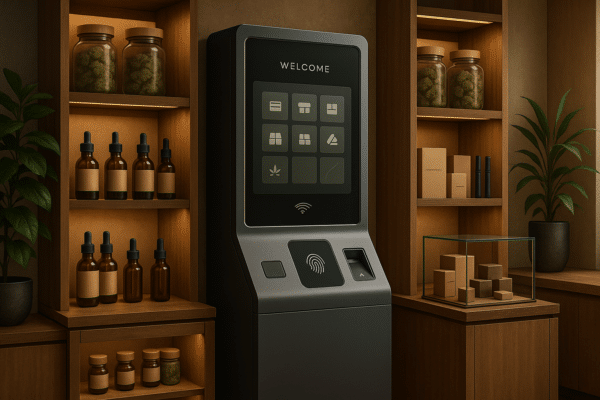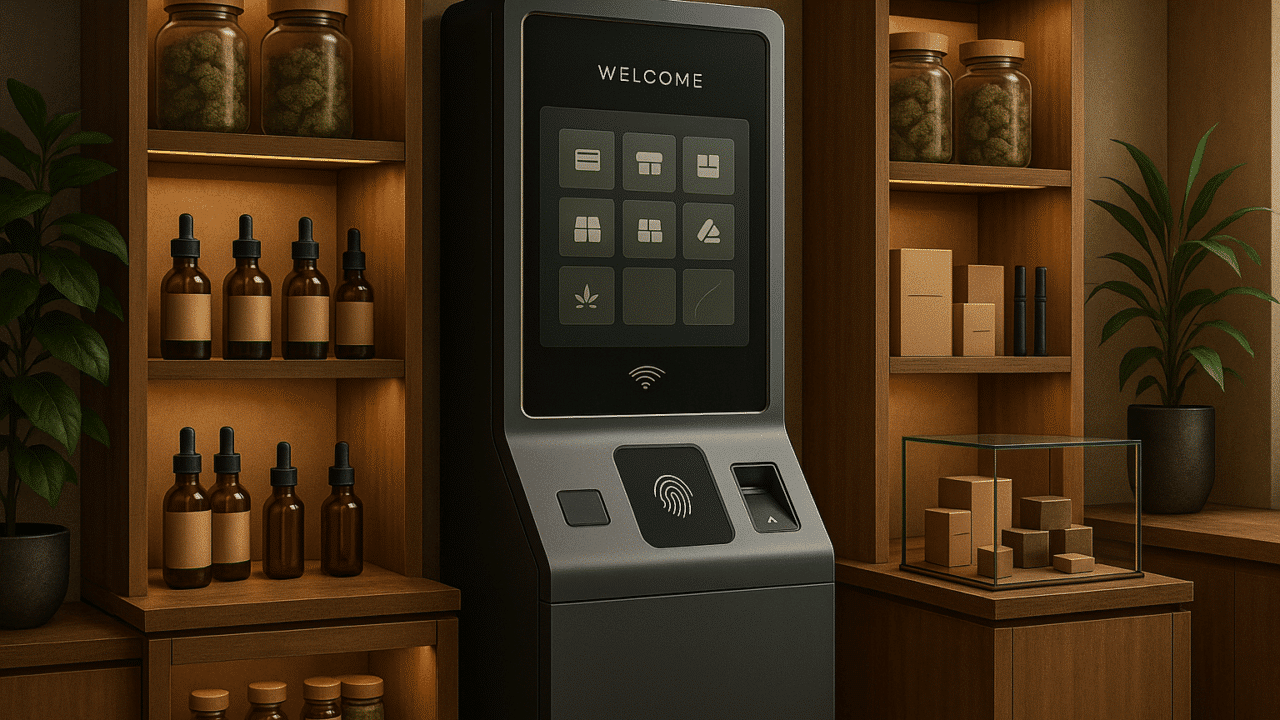
A Guide to Inventory Management Retail: Strategies, Challenges, and Trends
Inventory management remains one of the most critical components of retail operations. The volume and diversity of merchandise flowing through retail enterprises presents constant challenges. Out-of-stocks from poor replenishment can lead to missed sales, while excess inventory ties up capital and leads to profit-eroding markdowns.
By implementing the right strategies, processes, and technologies, retailers can streamline inventory operations to satisfy customers, reduce waste, and improve the bottom line.
The Customer Experience Hinges on Inventory
Inventory management is ultimately about fulfilling customer demand. Shoppers expect to find the products they want in stock and quickly accessible across channels. Out-of-stocks erode loyalty, sending customers to competitors. Excessive or cluttered inventory creates a poor shopping environment.
Well-managed inventory directly enables positive customer experiences. It provides the merchandise selection and availability they expect. Lean, accurate, and visible inventory also allows delivering on conveniences like buy online pickup in-store (BOPIS) and ship-to-store.
By making inventory accuracy and efficiency an organizational priority, retailers can consistently meet customer expectations. The strategies and tactics covered in this guide aim to help retailers achieve that goal.
Advanced Tracking for Visibility
Retailers must have comprehensive visibility into inventory movements across their enterprise to make strategic decisions and meet customer needs. Advances in tracking technology provide that visibility with far less manual effort than traditional inventory approaches.
Radio Frequency Identification (RFID)
RFID tags and sensors enable hands-free, automatic tracking of inventory in real-time. The ability to instantaneously scan items without line-of-sight through radio signals unlocks game-changing capabilities:
- Perpetual Inventory Visibility: Constant counts without labor-intensive audits.
- Improved Loss Prevention: Exit portals can detect unpaid items leaving stores.
- Enhanced Omnichannel Capabilities: Inventory accuracy across channels and locations.
- Automated Reordering: Use RFID data to instantly detect and replenish out-of-stocks.
The upfront investment in widespread RFID remains a barrier, but ROI can be achieved in as little as 2-3 years through labor and accuracy gains.
Barcode Scanning
For retailers just starting their inventory visibility journey, barcode scanning represents a logical first step. Barcodes provide:
- Improved Inventory Accuracy: Scan counts are more precise than human estimates.
- Faster, Efficient Audits: Handheld scanners facilitate regular cycle counts.
- Item-level Tracking: Unique barcodes assigned to products enable tracing.
- Seamless POS Integration: Scan items at checkout for automatic system updates.
While not as advanced as RFID, barcodes remain a proven, affordable way to automate inventory tracking.
Inventory Management Systems
Central inventory management software ties together critical sales, ordering, fulfillment, and accounting data to optimize planning and minimize stockouts. Key capabilities of this retail inventory management system include:
Perpetual Inventory
By syncing inventory management systems with point-of-sale and e-commerce transactions, retailers can achieve perpetual inventory visibility. Real-time updates on sales and inventory movements eliminate latency between transactions and records. This prevents gaps that lead to stockouts or shrinkage.
Automated Replenishment
Sophisticated systems can automatically generate purchase orders and transfer documents to replenish stock. By predefining par stock levels, lead times, and economic order quantities, the system can trigger orders at optimal times to maintain availability while minimizing carrying costs. Users simply review system recommendations versus manually calculating orders.
Omnichannel Visibility
Unified inventory management provides retailers with a “single source of truth” into stock levels across all stores, websites, and warehouses. This facilitates capabilities like ship-from-store and buy online pickup in-store that require enterprise-wide visibility.
Powerful Analytics
Robust reporting provides insights into inventory performance including turnover, weeks of supply on hand, service levels, and days on hand for each product/location. This supports data-driven forecasting, safety stock calculation, and process improvements.
End-to-End Workflow Integration
Inventory management systems connect directly to point-of-sale, e-commerce, purchasing, supply chain management, warehouse management, and accounting systems. This enables seamless workflows from procurement to sales transactions.
Access from Anywhere
Cloud-based systems provide access to inventory data and functions from any device via browser or mobile apps. This enables executives to monitor dashboards while floor staff can perform cycle counts, transfers, or look-ups on the go.
Strategic Inventory Planning
With perpetual visibility as the foundation, retailers can implement disciplined inventory planning strategies centered on maintaining optimal stock levels. Demand-driven analysis guides effective safety stock, reordering parameters, and segmentation.
Safety Stock Calculation
Safety stock provides a buffer against stockouts from demand spikes or supplier delays. However, holding excess safety stock inflates carrying costs. Aim for lean buffers calculated using:
- Lead Time: Longer lead times require higher safety stock.
- Service Level: Boost stock to increase on-time order fulfillment rates.
- Demand Variability: Inconsistent sales necessitate larger safety margins.
- Seasonality: Build ahead of peak periods, and draw down afterward.
Set safety stock levels by SKU based on each item’s unique profile. Strike a balance between responsiveness and waste.
Economic Order Quantities
Determine cost-efficient reorder quantities by factoring in:
- Holding Costs: Expenses tied to stored inventory, including opportunity cost.
- Ordering Costs: Freight, production/setup fees each order incurs.
- Demand: Higher turnover means smaller, more frequent orders.
Use historical data to calculate economic order quantity (EOQ) formulas per item for total cost optimization. This also guides dynamic reorder points – when to trigger the next orders.
ABC Inventory Segmentation
ABC analysis provides a powerful inventory prioritization technique based on Pareto’s 80/20 principle. By classifying products into A, B, and C categories based on annual dollar volume, retailers can tailor management practices to align with sales velocity.
Tight Controls on A Items
“A” products represent roughly the top 20% of SKUs that generate around 80% of total annual sales volume. These fast-moving items warrant significant focus to maximize availability and sales. Recommended practices include:
- Tight safety stock levels to limit the risk of stockouts.
- Frequent cycle counts to quickly detect any variances.
- Placement in prime locations in picking zones for the fastest access.
- Replenishment automation to keep par levels exact.
Making top-sellers easily accessible demonstrates respect for the outsized revenue contribution of A items.
Moderate Focus on B Items
“B” products represent roughly 30% of inventory SKUs generating 15% of volume. These mid-velocity products are important to availability but do not require top-level intensity. Tailored tactics include:
- Moderately lean safety stock buffers to balance service levels and waste.
- Cycle counting less frequently than A-products but more than C.
- Locations in secondary picking zones or reserve storage areas.
- Replenishment to maintain stock levels without excessive overage.
B items lend themselves well to efficient automation through inventory management systems.
Minimal Resources on C Items
“C” products represent about 50% of SKUs but just 5% of volume. Attempting to micro-manage slow sellers consumes more resources than recouped through sales.
Recommendations include:
- Minimal or no safety stock investment tied up in C products.
- Replenishment only when sold-through rather than staying perpetually in stock.
- Storage in tertiary reserve areas separated from active pick zones.
- Cycle counting only 1-2 times annually to confirm records.
Keeping C products lean frees up time and money to invest in driving availability on volume A and B segments.
Regularly update ABC codes as demand evolves across the product mix over time. This prevents one-size-fits-all mistakes.
Warehouse Optimization
To fulfill omnichannel demand efficiently, retailers must optimize warehousing and distribution center operations through storage, layout, automation, and order processing improvements.
Increase Storage Density
Leverage vertical space through:
- High-rise Storage Systems: Floor-to-ceiling pick modules with catwalks.
- Mezzanines: Multi-level steel structures doubling storage capacity.
- Narrow Aisle Configurations: Minimize wasted horizontal space between aisles.
This expands capacity within fixed square footage. Meet rising omnichannel volumes without expanding warehouses.
Strategic Layout Zoning
Arrange warehouse zones based on activity levels and inventory turns:
- Active pick and pack zones for A products – prioritize near shipping docks.
- Reserve storage zones for B and C items – keep slower products in secondary areas.
- Quality control areas near receiving – efficiently inspect incoming inventory.
Streamline traffic flows based on inventory velocity to minimize wasted motion.
Automation Through WMS
Warehouse management systems drive distribution center efficiency through:
- Optimized Slotting: Algorithmically assign storage locations based on demand.
- Directed Put-away and Picking: Send workers on optimal routes based on real-time inventory.
- Integrated Barcode/RFID Data: Enable hands-free inventory tracking.
- Waveless Processing: Dynamically release orders instead of batch waves.
- Paperless Workflows: Mobile devices replace paper for all warehouse processes.
WMS becomes essential beyond a certain omnichannel order volume.
Cycle Counting Best Practices
The traditional retail inventory approach of full-scale, intermittent store or warehouse counts is becoming outdated. Modern cycle counting provides perpetual visibility through ongoing partial counts.
Transition to Perpetual Cycling
Rather than periodic wall-to-wall counts, retailers should conduct recurring spot counts on designated zones, products, or random samples. Counting critical segments daily or weekly identifies discrepancies early before they grow. This continual cycling eliminates disruptive mass counts.
Optimize Counting Frequency
Tailor cycle count frequency based on product velocity and volume. Count the top 20% of SKUs representing 80% of volume at least weekly. Faster sellers are prone to shrink may warrant daily cycling. Count C-items with minimal movement quarterly or semi-annually. In massive warehouses, daily wall-to-wall cycling may be the most efficient.
Integrate Cycle Counting with RFID
RFID enables completely effortless cycle counting. The system provides continuous automated reads on all tagged inventory. Reports can instantly show cycle count results versus staff manually auditing. RFID also verifies the accuracy of manual cycle results.
Leverage Counts for Learning
The goal should be more than recording variances. Analyze the root causes of each discrepancy during reconciliation. Where did the mispick occur? What allowed shrinkage? This turns audits into learning experiences to continuously refine processes.
Make Cycling a Habit
Build cycle counting into daily or weekly staff routines. Rotate who performs counts to involve all and prevent monotony. Celebrate teams with top accuracy. Make cycling an ingrained process like safety meetings.
Frequent partial counts replace sporadic disruptions with a perpetual inventory accuracy system. This prevents distraction from core operations.
Overcoming Omnichannel Inventory Management Challenges
While optimal inventory management directly fuels an omnichannel competitive advantage, it also faces distinctive challenges from retail’s growing complexity across channels, locations, and seasons.
Combating Stockouts and Overstocks
Lack of inventory visibility across siloed channels causes stockouts online while stores overstock. Building unified commerce systems provides transparency to balance omnichannel inventories through:
- Shared Inventory Pools: All channels pull from the same central stock.
- Store Fulfillment of Online Orders: Extend inventory to customers beyond four walls.
- Web Visibility into Store Inventory: Prevent e-commerce stockouts.
- Ship-to-store: Strategic inventory positioning across network.
Seasonal Inventory Management
Store seasonal buildups and drawdowns effectively using historical data:
- Pre-season Ordering: Bring in the right quantities early based on forecasts.
- In-season Replenishment: Rapidly restock top sellers to catch demand.
- Markdown Optimization: Strategically mark down slow sellers to limit overstocks.
- Returns Forecasting: Factor in e-commerce return surges after holidays.
Leverage analytics rather than intuition so seasonal patterns strengthen inventory turns rather than overflow warehouses.
Reducing Shrinkage
Retail shrinkage averages 1-2% of sales, cutting severely into profitability. Combat causes include:
- Shoplifting and Fraud: Deploy CCTV, tags, and security personnel.
- Paperwork Errors: Digitize processes using inventory management systems.
- Vendor or Distribution Center Theft: Perform stringent inbound/outbound audits.
- Employee Theft: Institute inventory controls and accountability.
- Damage: Improve packaging and handling procedures.
Persistently controlling shrinkage factors helps sustain margin health.
Emerging Retail Inventory Tech Trends
Continued innovation promises to further optimize inventory visibility, speed, and analysis in the coming years. Key developments to watch include:
AI and Machine Learning
Next-generation inventory management systems will integrate predictive analytics and machine learning to guide smarter replenishment. By analyzing omnichannel demand patterns, inventory AI can:
- Forecast safety stock needs.
- Optimize reorder points and order quantities.
- Reduce stockouts and carrying costs.
- Recommend markdowns on slow-moving items.
- Suggest storage locations in distribution centers.
Drones
Warehouses will increasingly use camera-equipped drones for inventory counting, locating items, and monitoring product levels on shelves. Drones can perform daily floor-level cycle counts far faster than humans while reaching difficult locations.
Smart Packages and Sensors
Nano-sensors embedded in product packaging will enable precise tracking through supply chains. Sensors also provide visibility into conditions like temperature and moisture that could impact shelf-life. Real-time sensor feeds enhance warehouse operations and loss prevention.
Technology will continue providing inventory insights and automation opportunities to handle growing retail complexity. Investments made today establish advanced foundations to support future innovation.
The Bottom Line
Inventory sits at the heart of delivering products to customers across every retail channel and touching every aspect of operations. While many factors drive retail success, inventory acts as the fuel that keeps the engine running. When well-tuned through perpetual visibility, optimization strategies, and omnichannel coordination, inventory management directly translates into sales, profits, and competitive differentiation.
By learning from retail leaders, studying emerging practices, and exploring new technologies, retailers can break free of inventory management bottlenecks holding back business growth potential.
Look to T-ROC Global for Inventory Management Assistance
Whether you’re looking to implement new inventory management methods or need to overhaul your entire system, T-ROC Global can help.
At T-ROC, we combine people and technology to create custom solutions for brands, retailers, and manufacturers. We have extensive experience working with retailers to develop inventory management practices that help them track, organize, and manage sales. Our real-time management systems rely on RFID technology to provide unparalleled data and insight so you can stay competitive and efficient.
When you work with us, we handle every aspect of the process, from selecting hardware and software to tagging each and every item. We even train teams on how to accurately scan for inventory counts.








